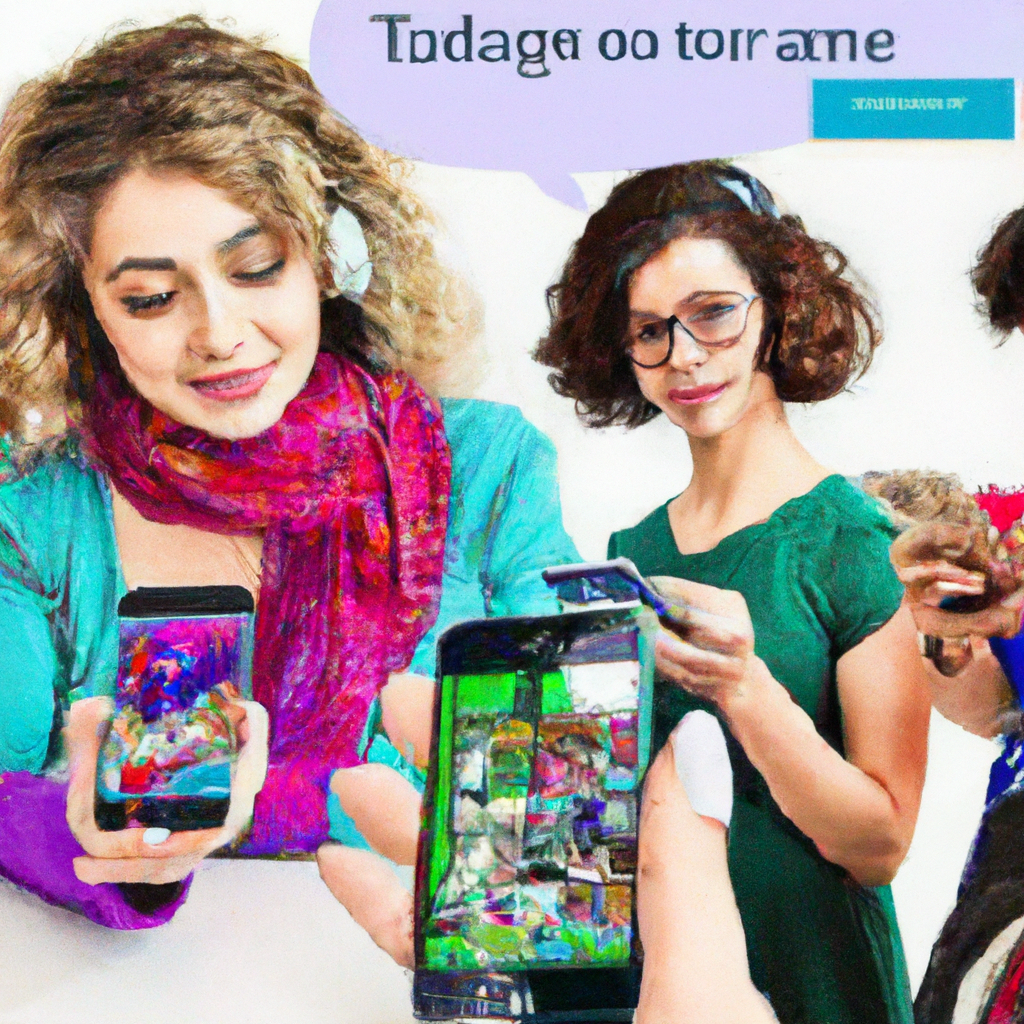Imagine a world where language is no longer a barrier, where people can communicate effortlessly with anyone from any corner of the globe. This vision is becoming a reality with the advent of dynamic, real-time language translation technology. By harnessing the power of artificial intelligence and machine learning, these innovative tools are breaking down the walls that have traditionally separated us. No longer will language be a hindrance to understanding, connection, and collaboration. In this article, we will explore the incredible potential of dynamic, real-time language translation and how it is revolutionizing the way we communicate on a global scale.

Understanding Dynamic, Real-Time Language Translation
Basics of Dynamic, Real-Time Language Translation
Dynamic, real-time language translation refers to the ability to translate spoken or written language instantly, with minimal delay. Unlike traditional translation methods that involve manual human intervention, this technology utilizes artificial intelligence (AI) and machine learning algorithms to provide instantaneous translation between multiple languages.
Real-time language translation is made possible by advanced technologies such as natural language processing (NLP), speech recognition, and synthesis. These technologies work together to process and understand human speech, convert it into written text, and then translate it into the desired language in real-time.
Role in Global Communication
The role of dynamic, real-time language translation is crucial in today’s interconnected world. It helps bridge the communication gap between individuals who speak different languages, enabling them to communicate seamlessly and effectively. This technology has significantly impacted global communication, breaking down language barriers and facilitating cross-cultural exchange.
Real-time translation tools have become an integral part of international conferences, business meetings, and diplomatic engagements. They allow participants to communicate in their native languages while simultaneously receiving real-time translations. This enhances understanding, fosters collaboration, and promotes inclusivity in the global community.
Advantages over Traditional Translation Methods
Dynamic, real-time language translation offers several advantages over traditional methods. Firstly, it eliminates the need for human translators, reducing costs and saving time. It provides instant translations, allowing for smoother and faster communication without interruptions or delays.
Moreover, real-time translation tools are continuously improving through machine learning algorithms, which means they become more accurate and reliable over time. Unlike human translators who may have limitations in vocabulary or expertise, these tools can handle a wide range of languages and dialects.
Real-time translation also enables accessibility for individuals with hearing or speech impairments. By translating spoken language into text or vice versa, it allows for more inclusive and meaningful interactions for all.
Science Behind Real-Time Translation
Artificial Intelligence and Machine Learning
Real-time translation relies on the power of artificial intelligence (AI) and machine learning algorithms. AI enables the technology to process and understand human speech, while machine learning allows the translation tool to continuously improve and adjust its performance based on previous translations and user feedback.
Through machine learning, these translation tools can recognize patterns, understand context, and improve accuracy over time. They learn from vast amounts of linguistic data, making them capable of translating even complex sentences or idiomatic expressions.
Natural Language Processing
Natural language processing (NLP) plays a significant role in real-time translation. It involves the understanding, interpretation, and generation of human language by computers. NLP algorithms enable machines to analyze and interpret written or spoken language, breaking it down into meaningful components such as words, phrases, and sentences.
NLP algorithms in real-time translation systems help extract the meaning from the input text or speech, determine the context, and generate accurate translations. These algorithms consider grammar, syntax, and semantics to produce translations that are not only accurate but also contextually appropriate.
Speech Recognition and Synthesis
Speech recognition and synthesis are essential components of real-time translation systems. Speech recognition technology converts spoken language into written text, allowing the system to analyze and process the input. On the other hand, speech synthesis technology generates spoken language output based on the translated text.
Speech recognition algorithms use acoustic models, language models, and pronunciation dictionaries to convert speech into text accurately. Speech synthesis algorithms, on the other hand, utilize text-to-speech technology to generate natural and intelligible translated speech.
Challenges the Technology Faces
While dynamic, real-time language translation has made significant advancements, it still faces several challenges. One of the main challenges is accurately capturing the nuances, cultural references, and idiomatic expressions unique to each language. Translating these elements accurately can be quite complex, as there may not always be an equivalent expression or concept in the target language.
Another challenge is the recognition and understanding of dialects or accents. Different regions within the same country may have variations in pronunciation or vocabulary, making it challenging for the translation system to accurately interpret the input.
Additionally, the technology may face difficulties in translating highly technical or specialized content, which often requires domain-specific knowledge and terminology.
Current Market Leaders in Real-Time Translation
Prominent Products and Their Features
Several companies have made significant progress in developing real-time translation tools. One of the market leaders is Google with its Google Translate service. Google Translate offers translations between hundreds of different languages and can be accessed through a web browser, mobile app, or integrated into other applications.
Microsoft’s Translator is another popular real-time translation tool that offers a range of features, including offline translation capabilities and the ability to integrate with various platforms and devices.
Other notable products include iTranslate, DeepL, and Systran, each with their unique features and capabilities.
Comparing Different Real-Time Translation Tools
When comparing different real-time translation tools, factors to consider include language coverage, accuracy, speed, user interface, and integration capabilities. Each tool may excel in some areas while lagging in others, making it important to choose a tool that suits specific needs.
For example, Google Translate may offer a broader range of supported languages, but Microsoft Translator might provide better integration options for certain platforms. It is essential to evaluate these factors based on specific requirements to determine the most suitable tool for the desired purpose.
Latest Innovations and Advancements
Real-time translation technology continues to evolve rapidly, with ongoing innovations and advancements. Companies are actively incorporating AI and machine learning to enhance accuracy, improve language coverage, and fine-tune contextual understanding.
Recent developments have also focused on making real-time translation tools more intuitive, user-friendly, and accessible across different devices and platforms. Integration with smart devices, voice assistants, and augmented reality systems is an area of growing interest.
Voice biometrics, which can identify and authenticate individuals based on their unique voice characteristics, are also being explored to enhance security and personalization in real-time translation systems.
Impact of Real-Time Translation on Different Industries
How Businesses Are Benefiting
Real-time translation has had a profound impact on businesses operating in an increasingly globalized market. It allows companies to communicate and engage with customers, partners, and suppliers from different language backgrounds, breaking down communication barriers and enabling smoother collaborations.
Real-time translation tools have also enabled companies to expand their reach and penetrate new international markets. By providing language support for their websites, customer support, and marketing materials, businesses can effectively engage with a wider audience, boosting customer satisfaction and loyalty.
Furthermore, real-time translation facilitates international business travel by providing instant language assistance and ensuring efficient communication during meetings, negotiations, and conferences.
Role in the Healthcare Industry
Real-time translation has significant implications for the healthcare industry, where accurate and timely communication is vital. In multilingual healthcare settings, real-time translation tools enable healthcare professionals to communicate with patients who speak different languages, ensuring effective diagnosis, treatment, and care.
These tools also support remote medical consultations and telemedicine, where healthcare providers can communicate with patients regardless of language barriers. This improves access to healthcare services, especially for underserved populations or individuals in remote areas.
Use in Emergency Services and Disaster Relief
During emergencies and disaster situations, real-time translation plays a crucial role in facilitating effective communication between emergency responders and affected individuals. Accurate and efficient translation can help convey critical information, instructions, and reassurance during these high-stress situations.
Real-time translation tools can aid in bridging the language gap, ensuring that emergency services can communicate effectively with individuals who may not speak the local language. This promotes faster, more efficient responses and enhances community safety and resilience.
Effect on the Tourism and Hospitality Sector
Real-time translation has transformed the tourism and hospitality sector by offering seamless communication between tourists and locals. It allows travelers to navigate foreign countries, interact with locals, and fully immerse themselves in new cultures with ease.
Tourism businesses, such as hotels, restaurants, and tour operators, benefit from the ability to provide personalized, language-specific services for their international guests. Real-time translation tools enable them to understand and cater to diverse needs, enhancing the overall customer experience and fostering positive reviews and recommendations.

Role in Education and Research
Support in Multilingual Learning
Real-time translation technology plays a significant role in promoting multilingual learning and language acquisition. It enables students to access educational materials in different languages, breaking down language barriers and allowing for more inclusive and diverse learning environments.
Real-time translation tools also facilitate communication between students and educators from different language backgrounds, fostering collaboration and understanding.
Facilitating Global Academic Collaboration
Real-time translation has transformed the landscape of global academic collaboration. It allows researchers from different countries and linguistic backgrounds to collaborate seamlessly, exchanging ideas, conducting joint studies, and publishing research in international journals.
This technology enables real-time communication and knowledge sharing, overcoming language barriers that previously hindered global academic collaboration. It has the potential to accelerate scientific advancements and promote cross-cultural understanding in the academic community.
Promoting Diverse Research
Real-time translation in research settings promotes diversity and inclusivity by enabling researchers to access and contribute to a wide range of literature. It allows scholars to delve into foreign texts and publications, expanding their knowledge base and contributing to interdisciplinary research.
Furthermore, real-time translation aids in the dissemination of research findings to a global audience. By translating academic papers and presentations, researchers can make their work accessible to a broader audience, fostering cross-cultural exchange and collaboration.
Accessibility through Real-Time Translation
Helping People with Speech or Hearing Impairments
Real-time translation technology has revolutionized accessibility for individuals with speech or hearing impairments. By converting spoken language into text or vice versa, it enables seamless communication for people with hearing difficulties or speech disabilities.
These tools can facilitate communication during healthcare appointments, job interviews, or everyday interactions, empowering individuals who would otherwise face significant challenges in expressing themselves or understanding others.
Aiding People with Learning Disabilities
Real-time translation technology also aids individuals with learning disabilities, such as dyslexia or language processing disorders. By providing instant translation and text-to-speech capabilities, it supports individuals in comprehending and engaging with learning materials more effectively.
Students with learning disabilities can utilize real-time translation tools to overcome reading or writing challenges, ensuring equal educational opportunities and fostering independence.
Enabling More Diverse Interactions
Real-time translation tools promote diversity and inclusivity in interactions between individuals from different linguistic backgrounds. They enable seamless communication and understanding, fostering meaningful connections and cultural exchange on a global scale.
These tools have expanded opportunities for cross-cultural friendships, business collaborations, and personal relationships. By breaking down language barriers, real-time translation promotes empathy, understanding, and appreciation for diverse cultures and perspectives.

Future of Real-Time Translation
Predicted Trends and Advances
The future of real-time translation holds exciting possibilities. AI and machine learning will continue to play a pivotal role, improving accuracy, language coverage, and contextual understanding. We can expect real-time translation tools to become even more intuitive, adapting to individual preferences and language nuances.
As technology progresses, real-time translation systems may integrate seamlessly with wearable devices, augmented reality, and virtual reality platforms. This will enable users to receive translated information instantly in real-world settings, enhancing cross-cultural experiences and facilitating communication in diverse environments.
Potential Challenges and Roadblocks
Despite the progress made, challenges remain for real-time translation technology. As languages evolve and new idiomatic expressions or cultural references emerge, ensuring accurate and relevant translations will be an ongoing challenge. Maintaining up-to-date language models and adapting to linguistic changes will be essential to overcome these obstacles.
Additionally, preserving user privacy and data security will be a priority. As real-time translation tools rely on processing large amounts of speech and text data, there must be stringent measures in place to protect user information and prevent misuse or unauthorized access.
Influence on Global Communications Pattern
Real-time translation is reshaping the way we communicate on a global scale. As the technology becomes more accessible and accurate, it has the potential to significantly impact global communication patterns.
Real-time translation tools contribute to a more inclusive and interconnected world, facilitating cross-cultural understanding, and breaking down language barriers. They empower individuals, businesses, and communities to engage in meaningful and authentic conversations, fostering cooperation, innovation, and harmony across borders.
Cultural Implications of Real-Time Translation
Preserving or Diluting Cultural Identities?
The rise of real-time translation has sparked discussions about the preservation or dilution of cultural identities. While translation tools facilitate communication, they may inadvertently homogenize language and dilute cultural nuances. Idioms, cultural references, and unique linguistic expressions that are difficult to translate may be lost, potentially eroding cultural diversity.
However, when used as a tool for cultural exchange, real-time translation can also preserve and promote cultural identities. It allows individuals to understand and appreciate different cultures, sparking curiosity and inspiring cross-cultural learning.
Role in Promoting Global Cultural Understanding
Real-time translation has an integral role in promoting global cultural understanding by facilitating communication and reducing misunderstandings between people from different backgrounds. It enables individuals to engage in genuine conversations, fostering empathy and appreciation for cultural differences.
Real-time translation tools can encourage individuals to explore different cultures, fostering tolerance and respect. They provide opportunities for meaningful connections and cross-cultural learning, contributing to a more inclusive and harmonious global society.
Concerns about Language and Culture Loss
Despite the benefits, concerns have been raised about the potential loss of languages and cultural diversity due to the widespread adoption of real-time translation. As languages with smaller populations become less frequently used, the risk of language extinction increases.
Efforts to preserve endangered languages and promote multilingualism must go hand in hand with the adoption of real-time translation. Balancing the convenience and accessibility provided by the technology with the need to preserve linguistic and cultural diversity is crucial for a harmonious and inclusive global society.

Privacy and Ethics in Real-Time Translation
Data Security Concerns
Real-time translation systems rely on processing vast amounts of user data, including speech, text, and personal information. This raises concerns about data security and the potential for misuse or unauthorized access.
Companies must prioritize robust data protection measures, including encryption, secure storage, and adherence to data privacy regulations. Transparency about data usage and informed consent from users are essential to ensure that personal information is treated with the utmost care and respect.
Balancing Accessibility with Privacy
Real-time translation aims to provide accessibility to all individuals, regardless of their language or communication abilities. However, achieving universal accessibility must also consider privacy concerns.
Striking a balance between providing inclusive services and protecting user privacy requires careful consideration. User-centric design, privacy-enhancing technologies, and transparent privacy policies are essential components of achieving this delicate balance.
Resolving Ethical Dilemmas
Real-time translation technology raises ethical questions, particularly in situations where accuracy is critical, such as legal proceedings or healthcare consultations. Ethical guidelines and standards must be established to ensure that real-time translation tools are used responsibly and with regard for the human impact.
Addressing the challenges of bias, fairness, and cultural sensitivity is essential to uphold ethical standards in translation. Ongoing dialogue and collaboration between developers, researchers, and ethicists can help navigate these complex ethical dilemmas and ensure the responsible use of real-time translation technology.
Case Studies of Real-Time Translation in Action
Use Cases in Business and Enterprise
Real-time translation has transformed the way businesses and enterprises operate globally. For example, multinational corporations can conduct meetings and negotiations with partners and clients from different language backgrounds, thanks to real-time translation tools. This enhances collaboration, fosters trust, and accelerates decision-making processes.
Real-time translation has also enabled e-commerce companies to expand their reach to international markets. By providing language support on their platforms, businesses can effectively market and sell their products to customers who may not speak the local language.
Implication in Healthcare Settings
Real-time translation in healthcare settings has proven to be invaluable, especially in emergencies and critical care scenarios. For instance, emergency responders can utilize translation tools to communicate with individuals who speak different languages during on-site medical treatments or ambulance rides.
In telemedicine, real-time translation enables healthcare providers to offer remote consultations to patients across language barriers. This eliminates the need for costly and time-consuming in-person interpretations, ensuring timely access to healthcare services.
Impact on Individual Lives and Communities
Real-time translation has had a substantial impact on the lives of individuals and communities. It has enriched personal relationships, allowing people to communicate and connect deeply across language boundaries.
In diverse communities, real-time translation promotes inclusivity and participation. It enables individuals who do not speak the dominant language to actively engage in community events, meetings, and social activities, fostering a sense of belonging and cohesion.
Real-time translation also plays a vital role in facilitating cross-cultural understanding and tolerance. By breaking down language barriers, it opens the door to empathy, fostering appreciation and respect for different cultural perspectives.
In conclusion, dynamic, real-time language translation has revolutionized global communication by breaking down language barriers and enhancing cross-cultural understanding. Through the science of artificial intelligence, machine learning, natural language processing, and speech recognition, real-time translation tools have become increasingly accurate, accessible, and versatile. The impact of this technology spans various industries, including business, healthcare, education, and tourism, fostering collaboration, accessibility, and cultural exchange. While challenges related to cultural preservation, privacy, and ethics persist, ongoing advancements and responsible use can ensure the future of real-time translation as a force for positive change.











